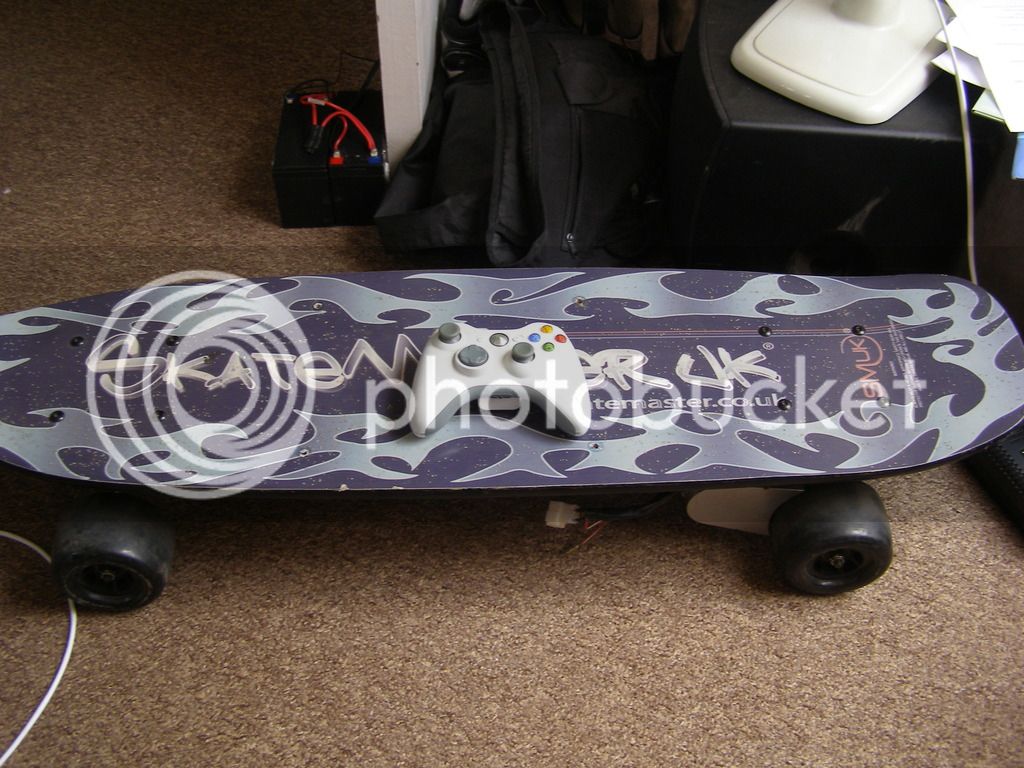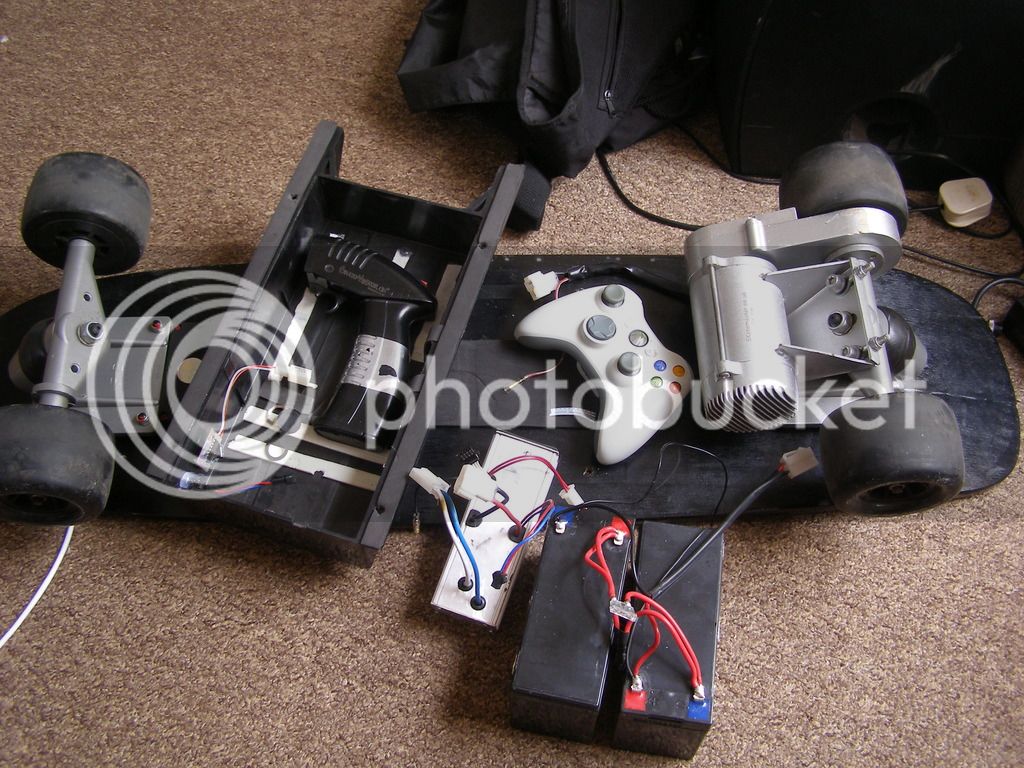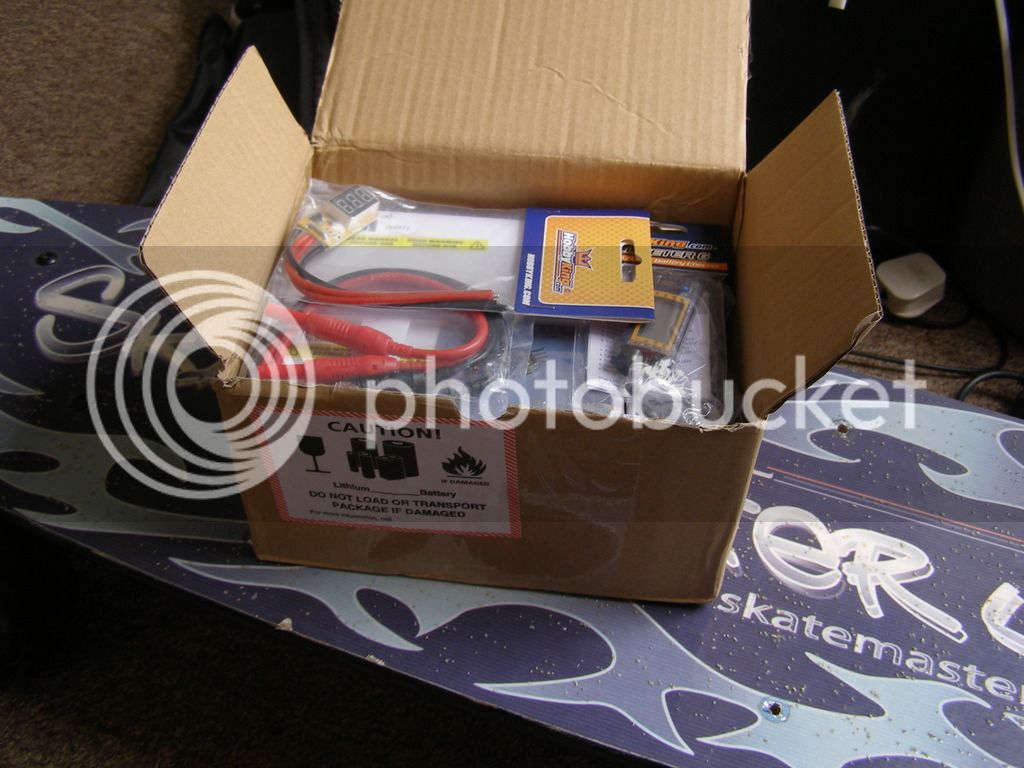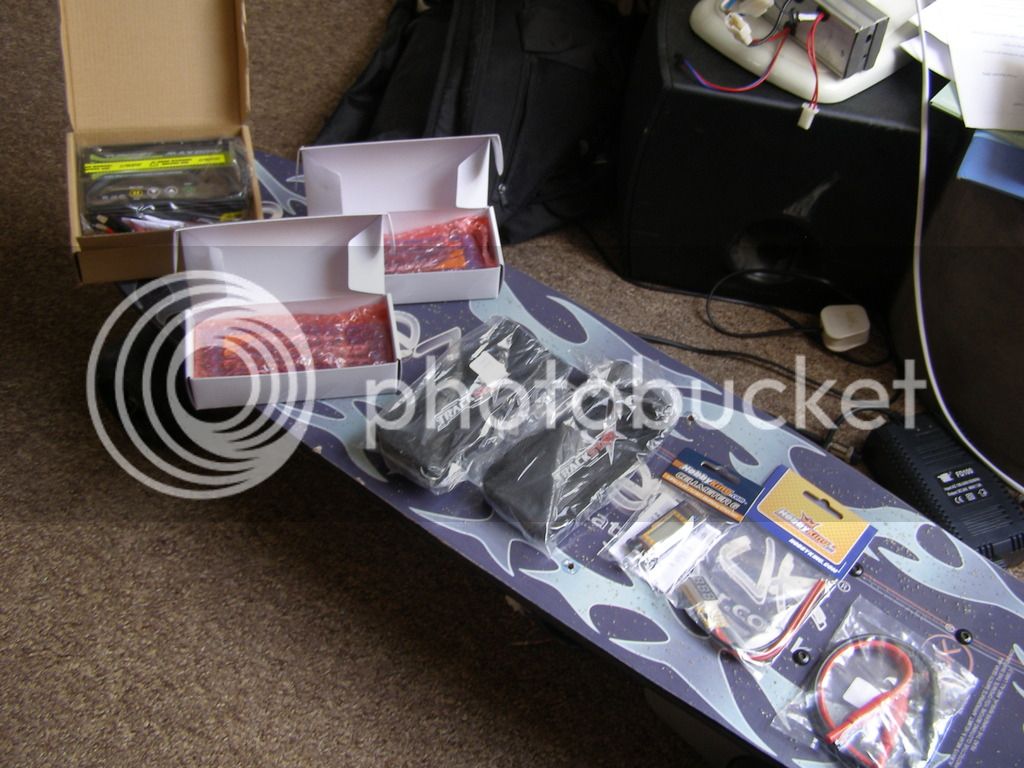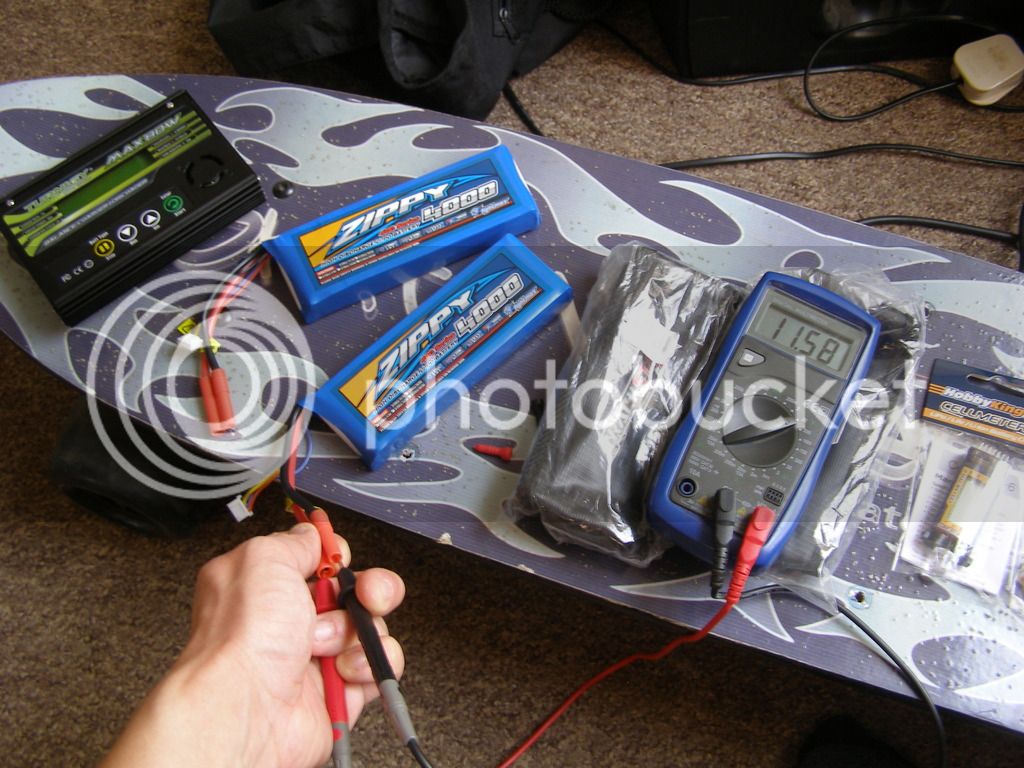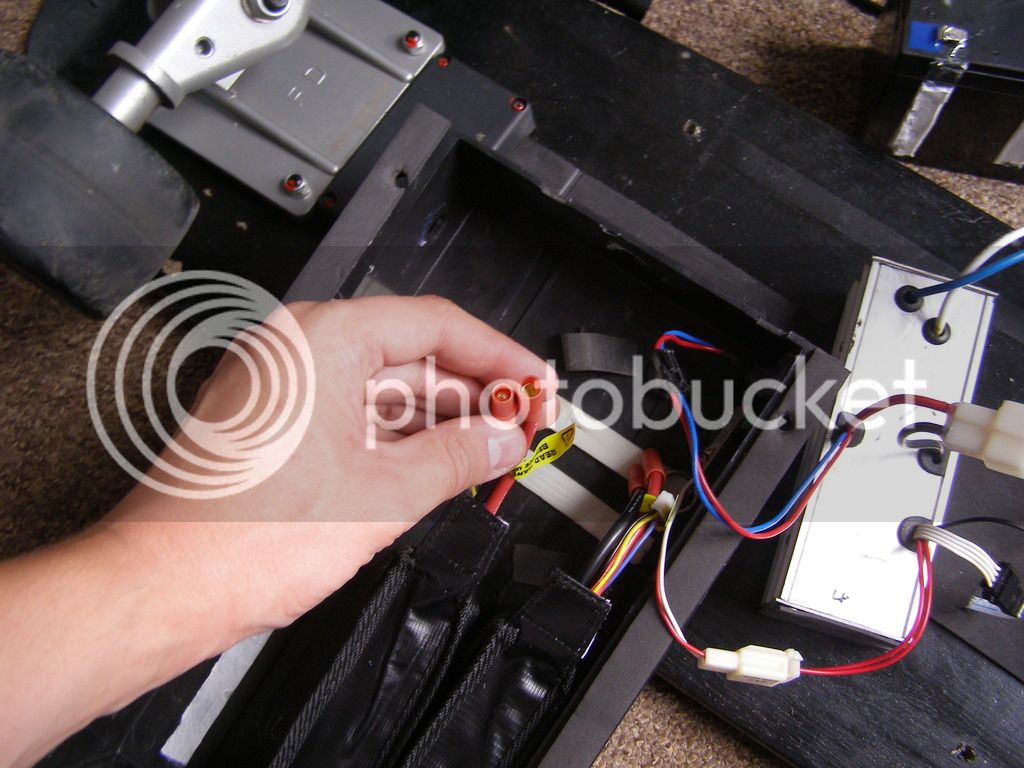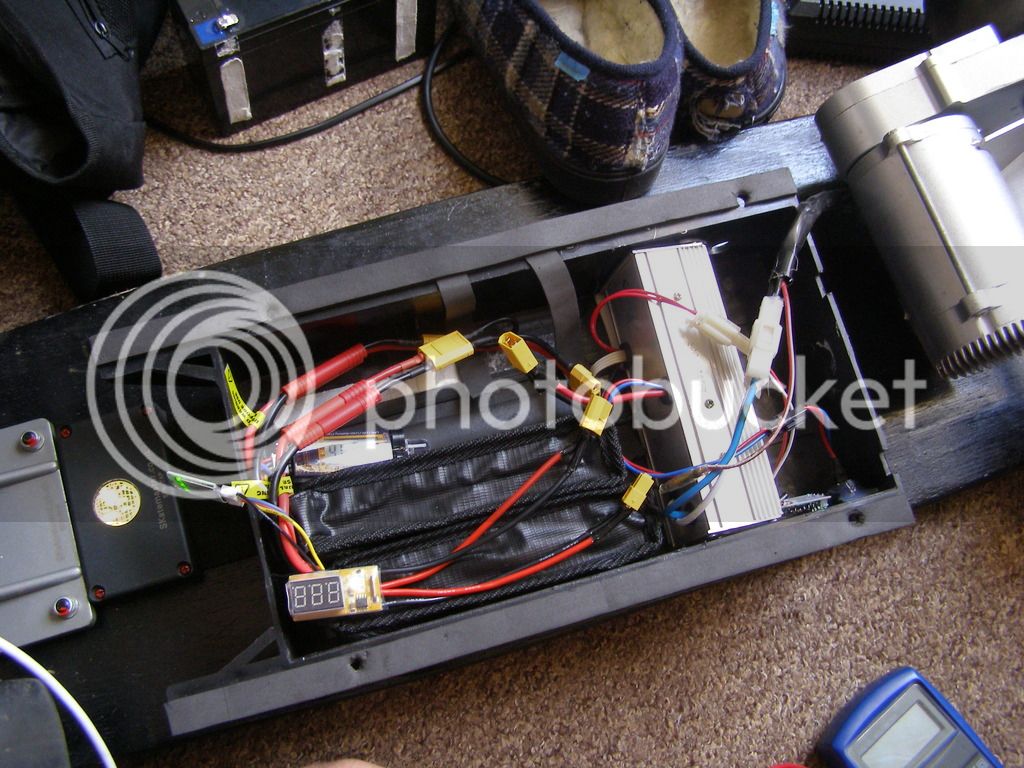Gargravarr
1 mW
- Joined
- Jun 22, 2015
- Messages
- 19
Hi guys,
Brit and skateboarding n00b here. I've been hankering after an electric board for years, after discovering xkcd author Randall Munroe is a big user of them - this despite me never having ridden a board before, btw. So, I finally took the plunge last week and dumped £85 into a Skatemaster board... and I'm starting to wonder what kind of mess I've gotten myself into!
Bit of background, I don't know how many Brits there are on here, but the e-skateboarding craze doesn't seem to have made much leeway over here. There are very few for sale, and only a small number of vendors seem to ship over here, at pretty high expense, so I wasn't very confident about getting one for a decent price. Then I found this one, but I can't find much information about it. It was bought second-hand, as seen, and all I got was the board, controller and charger.
Now, the good news is that the board works, which is a lot more than I can say for many others I found on eBay! The trouble is that the batteries are past it - they seem to last about half a mile and then the board can't even propel itself, forget with a person on it. I've taken it to bits and it's the usual affair - dual Chinese-made 12V SLA batteries in series for 24V, at a guess 7Ah. And blimey they're heavy! Lugging the board back home after it ran flat was NOT fun...
So, since I'm going to be replacing the batteries anyway, I figure I might as well do some hacking. I'm pretty confident with electronics. Now, the trouble is that I was being very truthful when I said I know next-to nothing about the board's specs - the company that made it, SkateMaster UK, seems to have gone under. There's some vague references here and there, including a short list of models, but nothing on the motor power. I don't know what model I have (my suspicion is the SF-X, but that doesn't help much!) or what the output of the power train is, but this board does seem to be pretty big. This is the board exactly: http://www.ebay.co.uk/itm/ELECTRICAL-SKATEBOARD-SKATE-MASTER-/161713508051
I guess the first step is to determine what the motor wattage is and go from there. There are no stickers on the housing, and the model number stamped on the casing, SFX-53M, doesn't help a lot - 530W possibly? I accept that's probably way too powerful for what I paid for it. The motor's a bit bigger than a standard drinks can; the wheels are about the same diameter.
Rather than replace the batteries with SLAs, I was wondering how hard it would be to swap in a li-po pack instead. As long as the voltage is the same, it ought to be plug-and-play for the board's controller, right? Obviously I'd need to get a different charger specifically for the pack. Of course, the li-po packs I've seen for electric bikes are more expensive than the whole board cost! So I thought, my intention with the board is to commute to work, which is a 1.5-mile journey through hills, so whilst it'll be quite demanding on the battery, at least it won't be for a long distance. I wondered, would it work to use a battery pack out of an electric drill? I've seen 24V Ni-Mh packs that manage 3.0Ah and are obviously designed to turn motors - maybe I could chain a few in parallel to cope with the high amperage the motor's going to pull? It would be cheaper than a li-po pack, but still be lighter than the stock batteries. Perhaps I could even rig them up to quickly eject from the board for charging!
I'm planning on doing some proper Arduino hacking later on, provided I've committed to using this board. Right now it's in pieces, so the first step is to get it running and usable. Can anyone help out?
Brit and skateboarding n00b here. I've been hankering after an electric board for years, after discovering xkcd author Randall Munroe is a big user of them - this despite me never having ridden a board before, btw. So, I finally took the plunge last week and dumped £85 into a Skatemaster board... and I'm starting to wonder what kind of mess I've gotten myself into!
Bit of background, I don't know how many Brits there are on here, but the e-skateboarding craze doesn't seem to have made much leeway over here. There are very few for sale, and only a small number of vendors seem to ship over here, at pretty high expense, so I wasn't very confident about getting one for a decent price. Then I found this one, but I can't find much information about it. It was bought second-hand, as seen, and all I got was the board, controller and charger.
Now, the good news is that the board works, which is a lot more than I can say for many others I found on eBay! The trouble is that the batteries are past it - they seem to last about half a mile and then the board can't even propel itself, forget with a person on it. I've taken it to bits and it's the usual affair - dual Chinese-made 12V SLA batteries in series for 24V, at a guess 7Ah. And blimey they're heavy! Lugging the board back home after it ran flat was NOT fun...
So, since I'm going to be replacing the batteries anyway, I figure I might as well do some hacking. I'm pretty confident with electronics. Now, the trouble is that I was being very truthful when I said I know next-to nothing about the board's specs - the company that made it, SkateMaster UK, seems to have gone under. There's some vague references here and there, including a short list of models, but nothing on the motor power. I don't know what model I have (my suspicion is the SF-X, but that doesn't help much!) or what the output of the power train is, but this board does seem to be pretty big. This is the board exactly: http://www.ebay.co.uk/itm/ELECTRICAL-SKATEBOARD-SKATE-MASTER-/161713508051
I guess the first step is to determine what the motor wattage is and go from there. There are no stickers on the housing, and the model number stamped on the casing, SFX-53M, doesn't help a lot - 530W possibly? I accept that's probably way too powerful for what I paid for it. The motor's a bit bigger than a standard drinks can; the wheels are about the same diameter.
Rather than replace the batteries with SLAs, I was wondering how hard it would be to swap in a li-po pack instead. As long as the voltage is the same, it ought to be plug-and-play for the board's controller, right? Obviously I'd need to get a different charger specifically for the pack. Of course, the li-po packs I've seen for electric bikes are more expensive than the whole board cost! So I thought, my intention with the board is to commute to work, which is a 1.5-mile journey through hills, so whilst it'll be quite demanding on the battery, at least it won't be for a long distance. I wondered, would it work to use a battery pack out of an electric drill? I've seen 24V Ni-Mh packs that manage 3.0Ah and are obviously designed to turn motors - maybe I could chain a few in parallel to cope with the high amperage the motor's going to pull? It would be cheaper than a li-po pack, but still be lighter than the stock batteries. Perhaps I could even rig them up to quickly eject from the board for charging!
I'm planning on doing some proper Arduino hacking later on, provided I've committed to using this board. Right now it's in pieces, so the first step is to get it running and usable. Can anyone help out?


